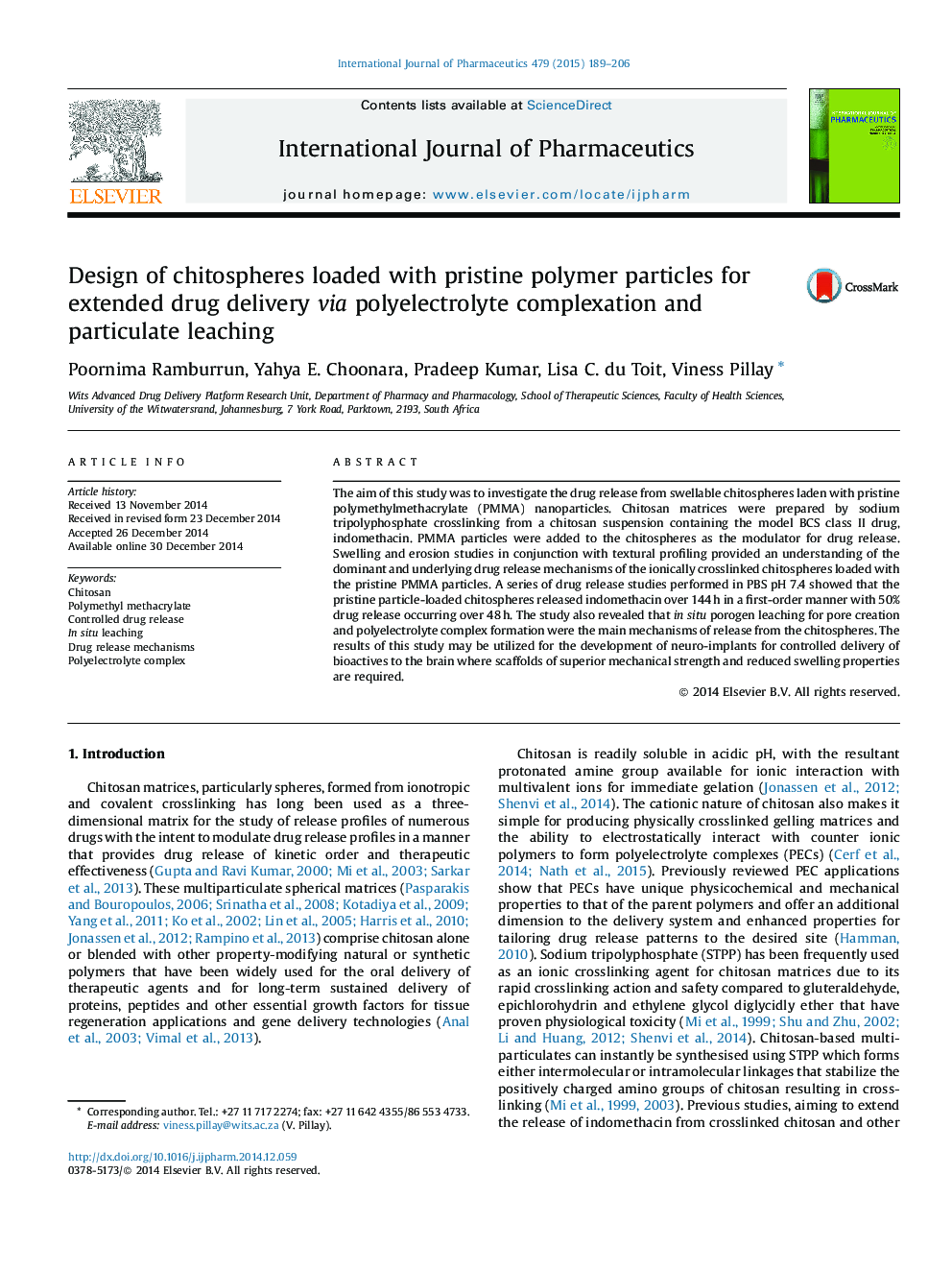| Article ID | Journal | Published Year | Pages | File Type |
|---|---|---|---|---|
| 2501557 | International Journal of Pharmaceutics | 2015 | 18 Pages |
The aim of this study was to investigate the drug release from swellable chitospheres laden with pristine polymethylmethacrylate (PMMA) nanoparticles. Chitosan matrices were prepared by sodium tripolyphosphate crosslinking from a chitosan suspension containing the model BCS class II drug, indomethacin. PMMA particles were added to the chitospheres as the modulator for drug release. Swelling and erosion studies in conjunction with textural profiling provided an understanding of the dominant and underlying drug release mechanisms of the ionically crosslinked chitospheres loaded with the pristine PMMA particles. A series of drug release studies performed in PBS pH 7.4 showed that the pristine particle-loaded chitospheres released indomethacin over 144 h in a first-order manner with 50% drug release occurring over 48 h. The study also revealed that in situ porogen leaching for pore creation and polyelectrolyte complex formation were the main mechanisms of release from the chitospheres. The results of this study may be utilized for the development of neuro-implants for controlled delivery of bioactives to the brain where scaffolds of superior mechanical strength and reduced swelling properties are required.
Graphical abstractFigure optionsDownload full-size imageDownload high-quality image (308 K)Download as PowerPoint slide
